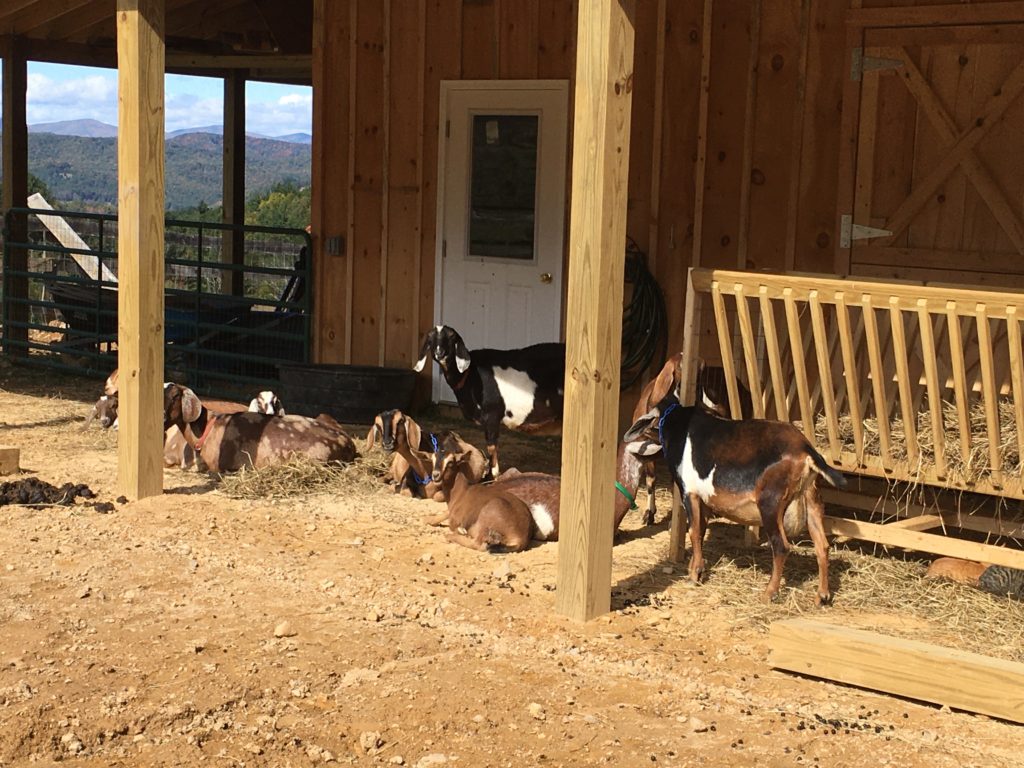
We are entering our final months of our first year with goats, and I have learned SO MUCH. From nutrition to illnesses to FAMACHA scores, to birthing our first kids, to teaching newcomer goats that, yes, they really can safely go out into our big scary pastures–it’s all been a trip! But in a good way.
Looking back, it’s kind of funny how we grew. I’ve been keeping chickens for years, and because they’re so easy to hatch, house, and raise, we’ve ended up each year with more than we intended! People often call it “chicken math.” You say you’ll have a small flock of four birds “just for eggs” and then end up with way more–and having to explain to your husband how this all came to be.
With goats, though, things were gonna be different. I planned to start small: two does in milk. See how it goes. But… I found (and this is fair warning for newbies!) that goat math is like chicken math. So here’s how it went for us…
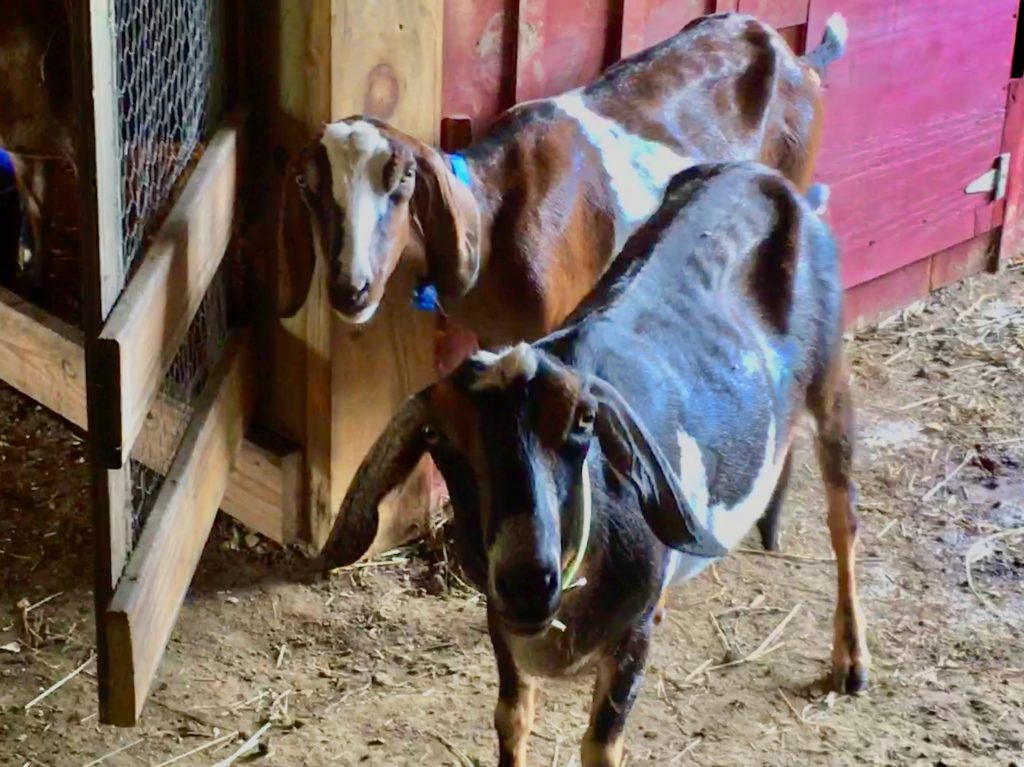
After reading a lot about goat conformation and the best blood lines available in the Mini Nubian world, I found my first two does in milk early last (offered in response to a post in a Mini Nubian goat breeders’ group) in November. Mimzie and Twyla were both pregnant in MI (10 hours away from me), and I agreed to get them after they kidded in the late spring. One was due in late April and the other in the first week of May. All fine and dandy. I was happy to wait until warmer weather.
The plan was to milk these two through the fall of this year, and then breed them for kids to be born in the spring of 2020. This would give us a nice easy ramp up into goat keeping, to make sure we liked it and could keep up with an every-day, twice-a-day milking schedule. For breeding we had heard that people often do “driveway breeding” — where you take your doe in heat to a neighbor and they “do it” in the driveway, then you take your doe home. Seemed like a great idea to me!
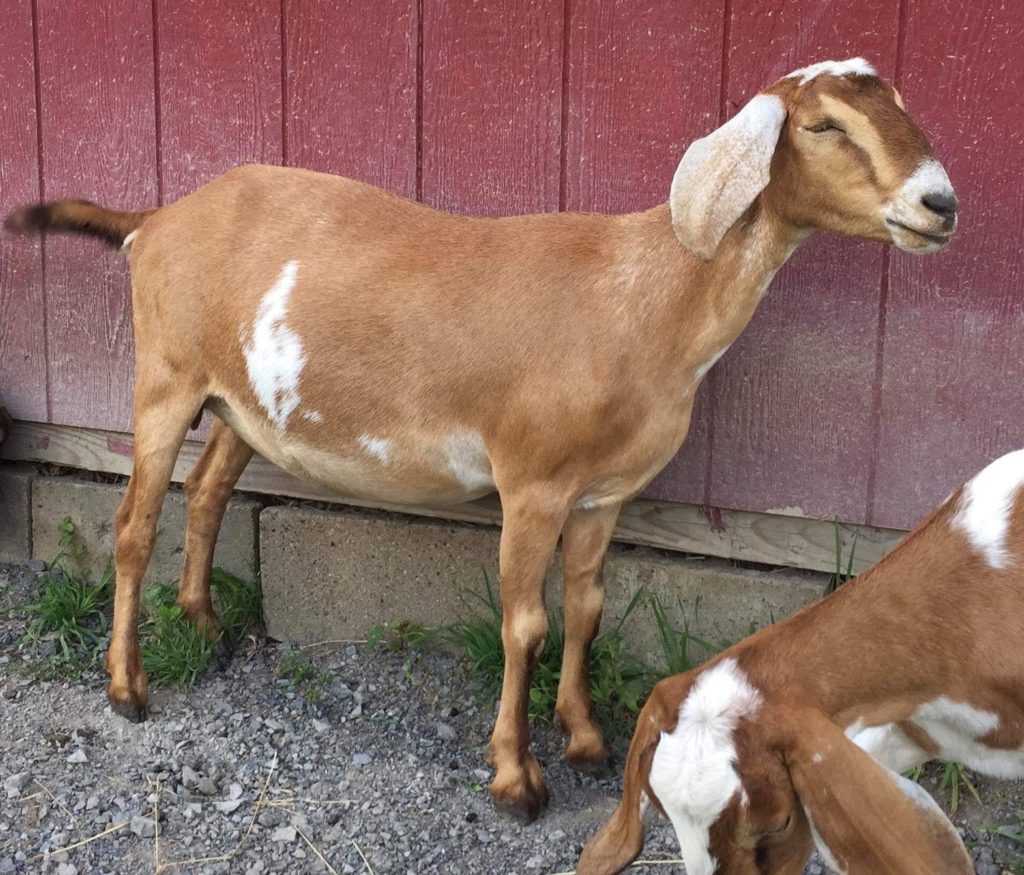
But THEN, I got an offer that I just couldn’t refuse to buy a nice, pregnant doe due in April. Buttercup was only four hours away. Yay! But, you might already know that you shouldn’t move pregnant does in the last six weeks of their gestation, because they can abort from stress. Yeah; so now I was getting goats in mid-February 2019, not late spring. Hmmm.
In the end, snagging Buttercup was one of the best ever decisions, because Buttercup’s seller was a big-hearted lady who has mentored me and become a dear friend over the last year of goat keeping. I don’t know what I would have done without Jen Crawford! Also (spoiler alert) Buttercup gave birth to three doelings on April 2, so that was like winning the lottery!
The decision to buy Buttercup led to the need for her to have a companion in mid-February. (Goats are herd animals and should absolutely never be kept solo.) Those Michigan does weren’t ready to come for months. So, I found a nearby farm with great quality “new blood” lines, and contracted to purchase a small, somewhat wild, doeling by the name of Milky Way (Milcah, for short). Just after I agreed to buy her, in January, she came into heat and her owner bred her. So, now I was getting two pregnant does in February, and two does in milk in late spring. Milcah was due in early June. And she did deliver (spoiler alert) doe/buck twins, right on time.
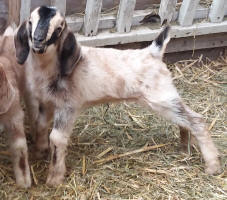
At this point, I found out that “driveway breeding” has become somewhat a thing of the past, due to bio security concerns. Plus, those who invest in really nice bucks understandably don’t share them for a song. SO, we decided that since we were all in, we might as well buy a buckling from the premier breeding barn in the country, Green Gables Mini Nubians (in WI).
The logic here is that, if you’re going to breed goats, genetically speaking, your buck is half your herd, since a single buck can become the father of all the kids on your farm in a given year. But many people don’t want to keep a buck around for 10 months, so they look for inexpensive ones to breed and then move on, one way or another. So, generally, backyard-bred bucklings don’t sell for much. Some are wethered (castrated) and sold as pets, but many head off to the auction block as meat. Sad, but true.
In top goat bloodlines, however, young doelings and bucklings sell for the same price. Again, the reasoning is that the buckling can grow up to service all the ladies, whereas if you buy an expensive girl, she’ll just be one in the herd of girls. So, we decided to invest the highest dollars in a Green Gables buckling, and as God would have it, we were first in line to choose our boy, Asher!
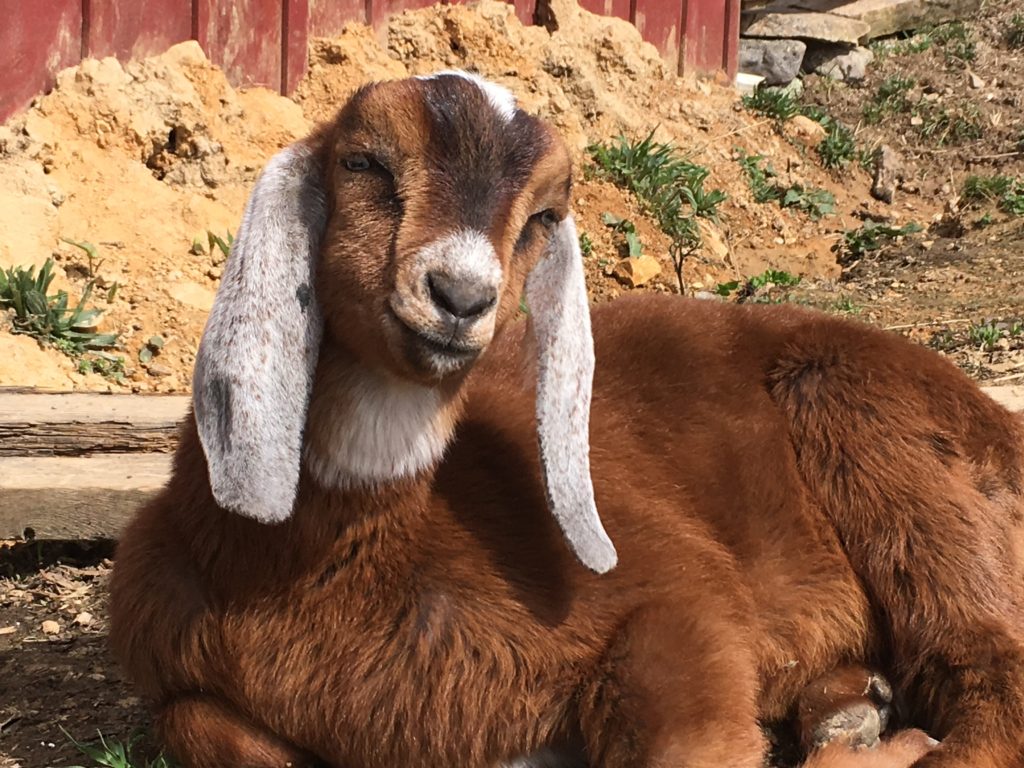
Then, of course, you can’t keep boys and girls together (because a buckling can breed a doeling as early as 12 weeks old!). So, we had to plan to keep him separate. We could have chosen to keep a wethered boy, but there’s no gain in that for us (you feed, house, and vet a wether, but can’t breed him. So, I bought another high-priced, blue-eyed buckling (Rigel), also from outstanding bloodlines, to keep him company. So now we had six goats contracted or bought. And (as it turned out) five on the way in utero.
And then my husband saw how little of a dent our two does (that were eating in our pastures by mid-March) made in our 35 acres, so I got to buy a few more does. Hurlburt Farms was having to downsize, and sold me Claire and Dorothy — along with Pete, a mature buck, who is polled. The does were Green Gables lines, so dovetailed well with my existing herd. All told, we ended up purchasing three bucks (and birthing one) and nine does (and birthing four). So, that’s goat math for ya!
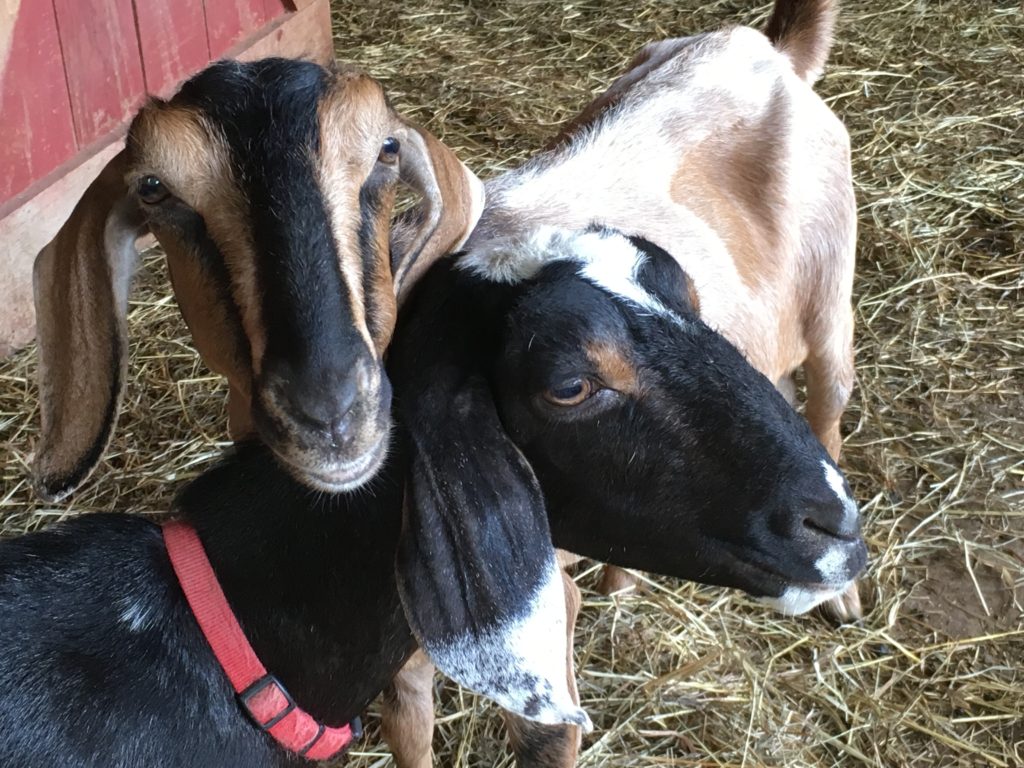
BFFs forever 
Finley’s Gem Texas Pete
And now I’ll act like your mother and say, “Do as I say, don’t do as I do.” Unless your husband is a amazing as mine is, you really do want to start slow: just look for a doe in milk, or a pregnant doe, and start small! You’ll be less crazy than I was that way!
It’s been challenging and fun at the same time to try to figure out which does are in heat, and which bucks will improve features of which does. (This is for me, who has three bucks to choose from, and 12 does of various ages. If you’re going to be doing a mini farm you won’t have so many options.)
How did you go about gathering your herd? Have you fallen pray to goat math??? Comment and let me know, or continue the conversation via email. Just sign up using the form below. Until then, blessings on you and your farming endeavors.
[mailerlite_form form_id=1]